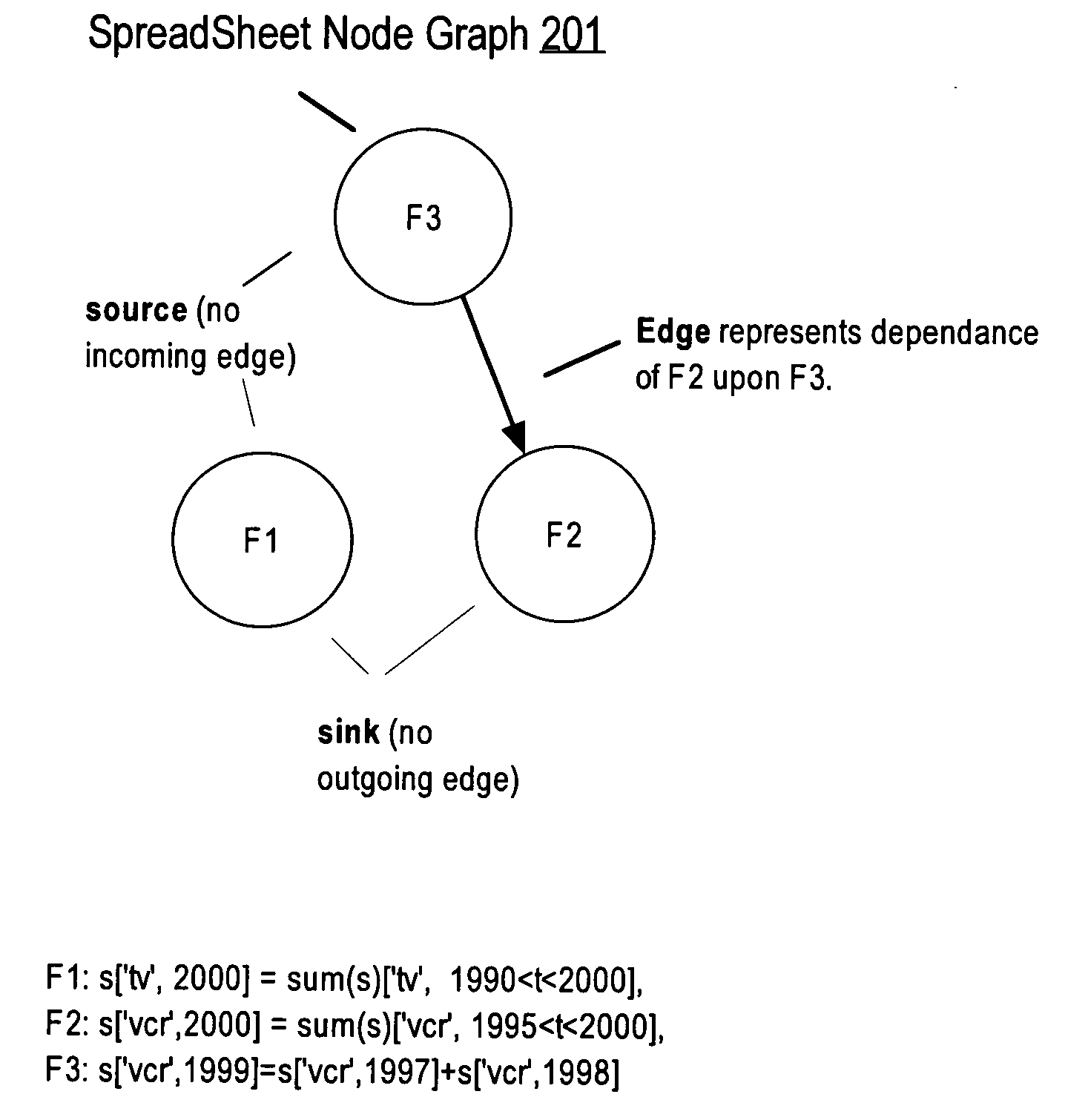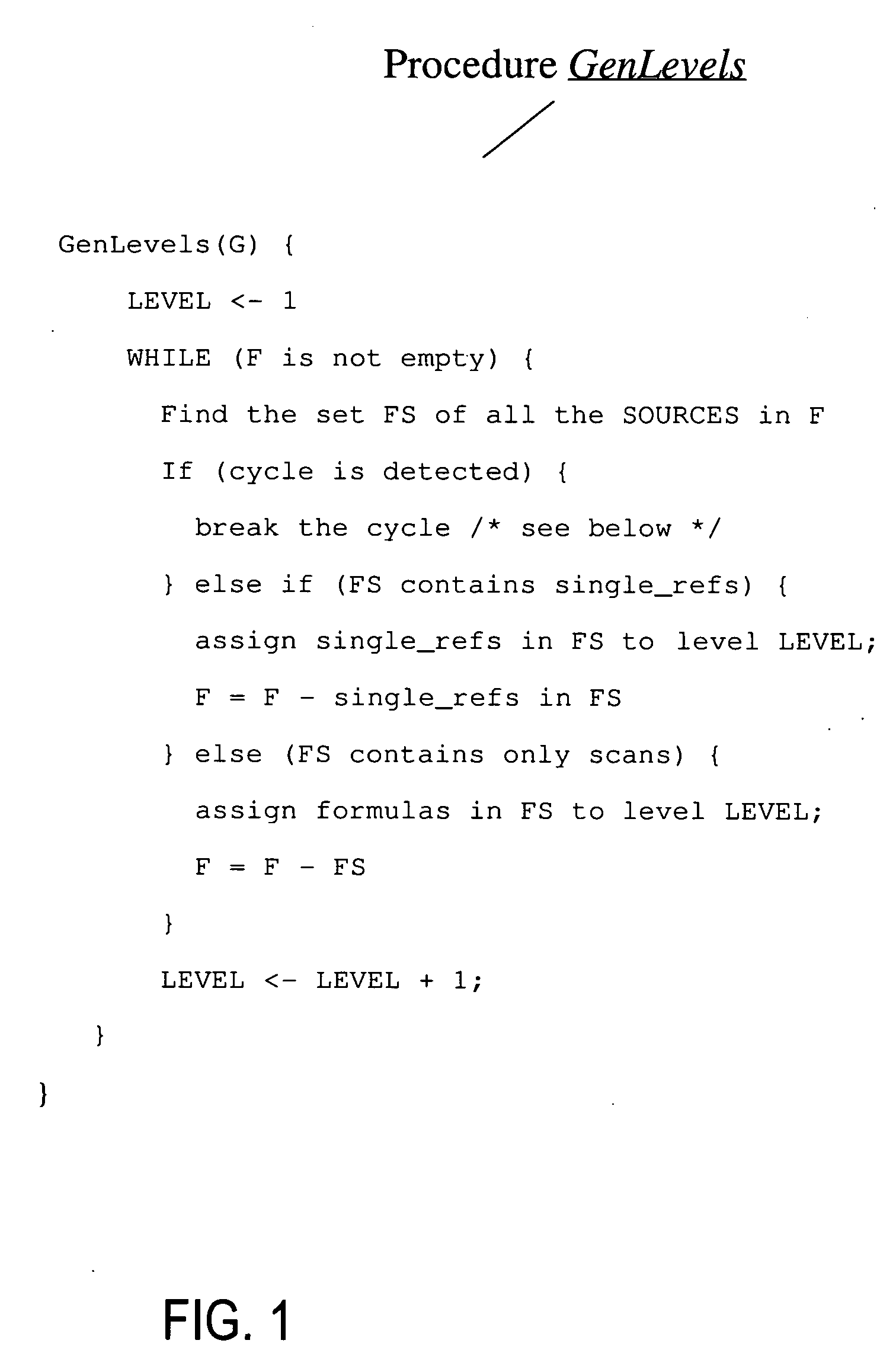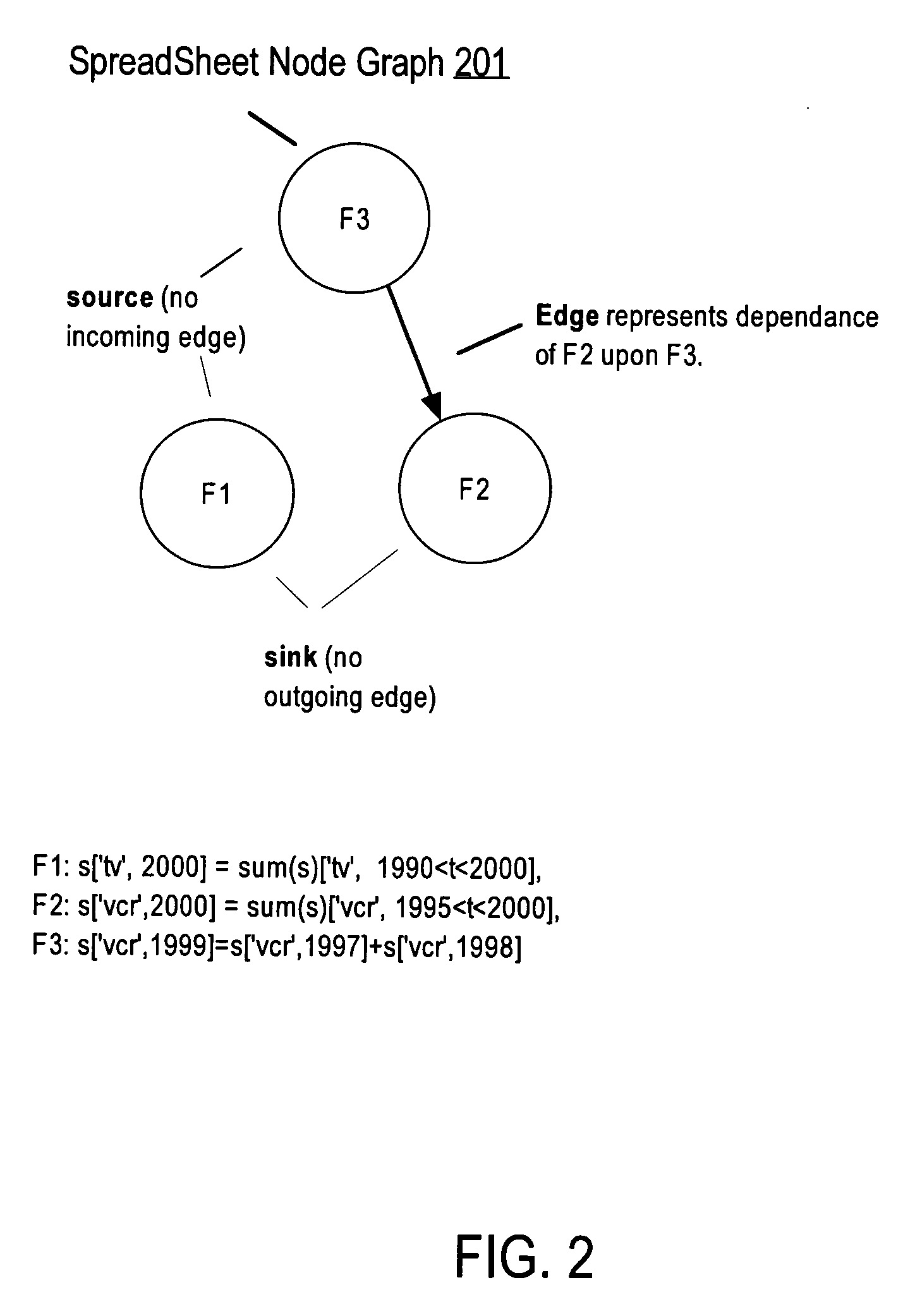Compile-time optimizations of queries with SQL spreadsheet
a query and spreadsheet technology, applied in the field of optimization of queries, can solve the problems of inefficient lack of efficient random access methods, and inability to perform array-like calculations in sql
- Summary
- Abstract
- Description
- Claims
- Application Information
AI Technical Summary
Benefits of technology
Problems solved by technology
Method used
Image
Examples
Embodiment Construction
[0018] A method and apparatus for optimizing the evaluation of spreadsheet queries is described. In the following description, for the purposes of explanation, numerous specific details are set forth in order to provide a thorough understanding of the present invention. It will be apparent, however, that the present invention may be practiced without these specific details. In other instances, well-known structures and devices are shown in block diagram form in order to avoid unnecessarily obscuring the present invention.
Overview
[0019] Under the spreadsheet extensions for n-dimensional arrays, relations can be viewed as n-dimensional arrays, and a formula can be defined over their cells. Cell addressing can be symbolic using dimensional keys or it can be positional. Similar to spreadsheets, the formulas can automatically be ordered based on the dependencies between the cells; recursive references and convergence conditions are supported, providing for a recursive execution model....
PUM
 Login to View More
Login to View More Abstract
Description
Claims
Application Information
 Login to View More
Login to View More - R&D
- Intellectual Property
- Life Sciences
- Materials
- Tech Scout
- Unparalleled Data Quality
- Higher Quality Content
- 60% Fewer Hallucinations
Browse by: Latest US Patents, China's latest patents, Technical Efficacy Thesaurus, Application Domain, Technology Topic, Popular Technical Reports.
© 2025 PatSnap. All rights reserved.Legal|Privacy policy|Modern Slavery Act Transparency Statement|Sitemap|About US| Contact US: help@patsnap.com



